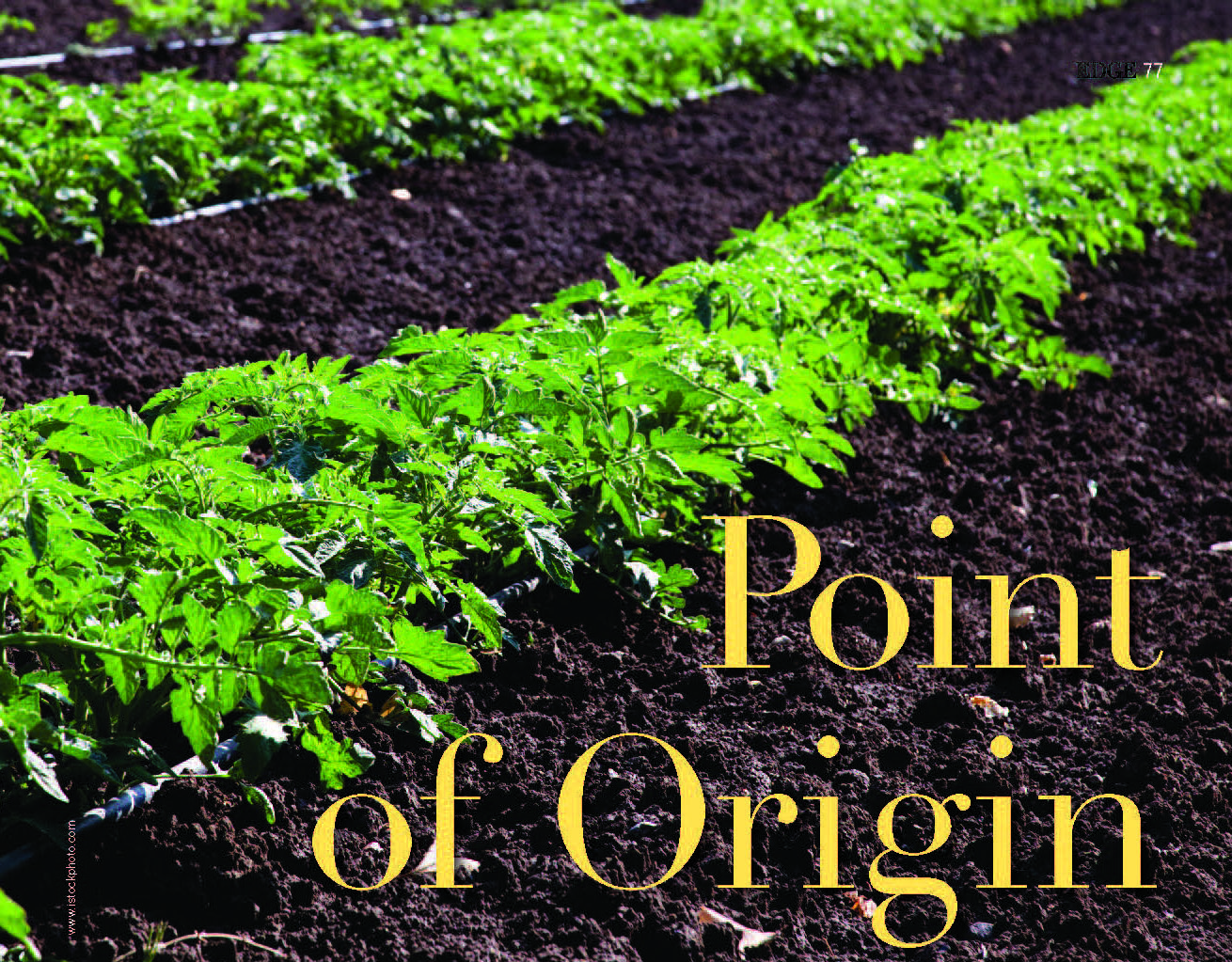New Jersey’s local flavor is available all winter long.
To many travelers speeding at 80 mph on I-95, New Jersey seems largely industrial, but it still, as it’s license plates claim, is “The Garden State”. For a century or two, New Jersey was a stretch of rich farmland, the green grocer to surrounding metropolitan areas—New York to the north and Philadelphia to the southwest. At the 1876 Centennial Exhibition in Philadelphia, Abraham Browning, the former attorney general of New Jersey and owner of Cherry Hill Farm, referred to the state as an open-ended cornucopia filled with delicious foods with New Yorkers eating out of one end and Philadelphians eating out of the other. While Cherry Hill is now mostly developed, the state still grows a cornucopia of fruits and vegetables.
Over the years, the industrial and the garden elements of New Jersey have fused together in the food industry as some of the country’s largest food companies—Progresso, Campbell’s Soup, Seabrook Farms—manufacture in the state.
In summer months, everyone becomes a locavore with grocery stores and farmers’ markets offering a bounty of fresh, local produce. The fresh-picked tomatoes, peaches and corn all taste sweeter than any other time of the year. According to Bob Sickles, owner of Sickles Market in Little Silver, “local” has replaced “organic” as the foodie buzzword of the moment.
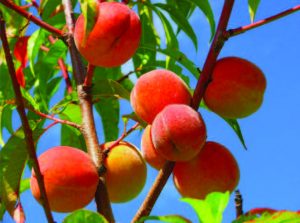
www.istockphoto.com
Just Peachy
In early summer, the harvest of ripe peaches in New Jersey brings homemade peach ice cream, peach pies and cobblers to many Garden State tables. If you didn’t get around to jarring your sweet peaches or making peach preserves, Circle M Farms bottles the sweet fruit flavor in the liquid form of a delicious peach cider that my son loves year round.
ToMAYto, ToMAHto
With the growing season is over and if you haven’t canned your own tomatoes, how can you recreate the tastes of summer in New Jersey? To make your own sauce any time of the year, Memet Wildirim, general manager of Ashley Market-place in West Orange, says Jersey Fresh Canned Tomatoes is a good product and sells well.
Standing among baskets of a variety of field grown tomatoes, ranging from Roma to Heirloom at Sickles Market, I asked Bob Sickles, what does New Jersey offer best, food-wise, year-round? “Tomato sauces rule!” he proclaims.
Some enterprising epicureans have bottled the fresh flavors of Garden State tomatoes. For instance, Market Basket, in Franklin Lakes, jars their own tomato sauce in large batches and sells it year-round. According to the store general manager, Dave Hamersmith, they also sell other premium quality New Jersey tomato sauces, such as Jersey Gravy.
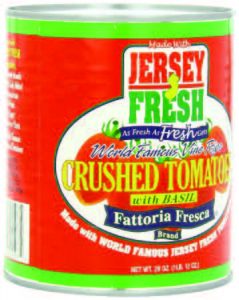 Bob Sickles explains that the local products excel over the mass-produced sauces. “While a larger production will process all the tomatoes, whether they are ripe or still green, and get a good sauce which has a higher acid flavor, the producers of the local sauces use hand-picked tomatoes and make sure they all are ripe. This creates a sweeter sauce, which is more work intensive and therefore has to be a bit more expensive. But it’s worth it.”
Bob Sickles explains that the local products excel over the mass-produced sauces. “While a larger production will process all the tomatoes, whether they are ripe or still green, and get a good sauce which has a higher acid flavor, the producers of the local sauces use hand-picked tomatoes and make sure they all are ripe. This creates a sweeter sauce, which is more work intensive and therefore has to be a bit more expensive. But it’s worth it.”
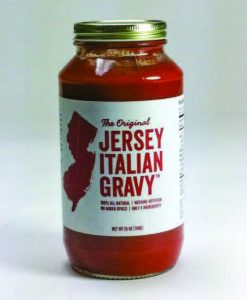 Not going on Bob’s word alone, we conducted a non-scientific tomato sauce taste test engaging four individuals with limited “foodie” credentials. In the mix were four New Jersey tomato sauces with slightly differing prices that can be purchased around the state—Nanina’s (25 cents per ounce) from Belleville, Manno’s (30 cents per ounce) from Bradley Beach, Jersey Italian Gravy (40 cents per ounce) from Ridgewood and Jar Goods (50 cents per ounce) from Hoboken—as well a bottle of Cabernet Sauvignon and a loaf of fresh ciabatta bread for dipping into the sauces.
Not going on Bob’s word alone, we conducted a non-scientific tomato sauce taste test engaging four individuals with limited “foodie” credentials. In the mix were four New Jersey tomato sauces with slightly differing prices that can be purchased around the state—Nanina’s (25 cents per ounce) from Belleville, Manno’s (30 cents per ounce) from Bradley Beach, Jersey Italian Gravy (40 cents per ounce) from Ridgewood and Jar Goods (50 cents per ounce) from Hoboken—as well a bottle of Cabernet Sauvignon and a loaf of fresh ciabatta bread for dipping into the sauces.
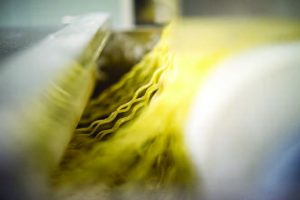 According to our tasting panel, all the sauces were winners, yet different. The least expensive, Nanina’s, provides a very good, all-purpose kitchen staple. One taster’s favorite, Manno’s marinara, was particularly gutsy with herb and garlic flavors punching out on our palates. This sauce would be good with seafood. Delicious Jersey Gravy was thicker and sweet. And the rich, full-bodied Jar Goods was the densest sauce, almost like a paste, offering a fruity, sweet flavor.
According to our tasting panel, all the sauces were winners, yet different. The least expensive, Nanina’s, provides a very good, all-purpose kitchen staple. One taster’s favorite, Manno’s marinara, was particularly gutsy with herb and garlic flavors punching out on our palates. This sauce would be good with seafood. Delicious Jersey Gravy was thicker and sweet. And the rich, full-bodied Jar Goods was the densest sauce, almost like a paste, offering a fruity, sweet flavor.
Ramen Romance
When one thinks of fresh ramen noodles, the words “New Jersey” don’t come immediately to mind. Many of us would rather go ramen-less than to try to digest the curly dried noodles that look like a bad hair perm, reconstituted by water added to its chemical-based broth. Sun Noodles offers a totally different ramen experience. A few years ago Sun Noodle Brand, a producer of ramen for 30 years in Hawaii, opened a factory in Teterboro. Sun Noodles purveys its products to many Ramen shops in New York and now offers fresh ramen kits—with or without delicious, if sodium-saturated, broths—in a number of local Whole Foods and Asian markets. Yes, the dried version in your grocery store costs less than a dollar, but for fewer than five dollars, I bought the real deal at Whole Foods, garnished it with shrimp, bok choy and scallions and fed three healthy eaters. It may not be as divine as the steaming pork bone broth at Ippudo ramen shop in NYC, but it’s still delicious.
New Jersey is a food-lover’s paradise offering so many wonderful local products. For instance, there are a variety of barbeque sauces—Hoboken Eddies, Grandpa Baldy’s from Freehold, and Outer Limits hot sauces from Bayonne. Mazi Piri Piri sauce from Bradley Beach, First Field New Jersey Tomato Ketchup and Fourth Creek relishes from Rumson stand out. Enjoy the seasonal nectar of local bees’ labors with honeys, which are helpful to allergies as well as being anti-bacterial. There are many more gourmet cheeses, locally made sausages and hot dogs, and snack food. As the old advertisement goes, “Try it, you’ll like it!”
Editor’s Note: Sarah Rossbach has written for the New York Times, the Washington Post, House & Garden, and Harper’s Bazaar. When she’s not moonlighting as a feature writer for EDGE, Sarah stays busy as a feng shui consultant to designers and corporate and private clients in New York City. Vogue said of Sarah that “she is probably the American most responsible for introducing feng shui to the West.”

